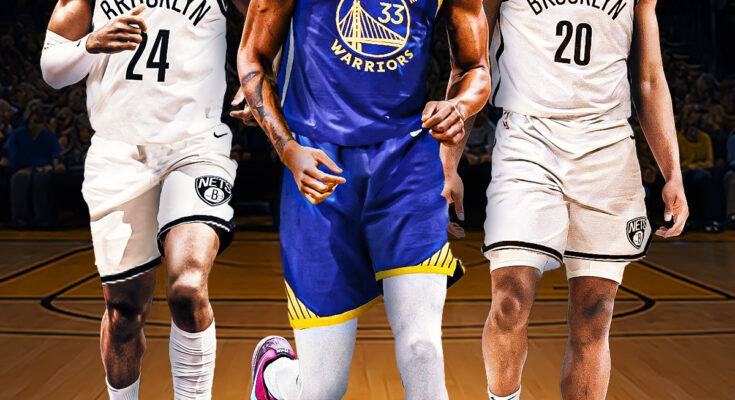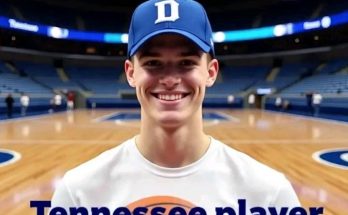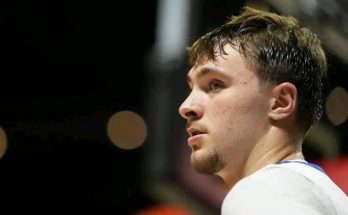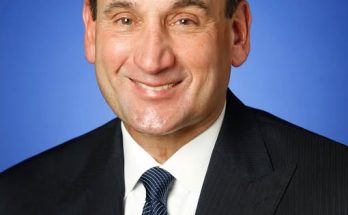The Golden State Warriors, a franchise synonymous with excellence and championship pedigree in the modern NBA era, find themselves at a critical juncture. After years of sustained success, with multiple titles to their name, their championship window remains slightly cracked open — not fully wide, but not completely shut either. As the team navigates this delicate balance, one pressing question looms large: how to add a big man who can seamlessly fit both their timeline and unique play style?
The Warriors’ identity has long been defined by their revolutionary approach to basketball—pace, space, and perimeter shooting. Their success has largely been built on a core of sharpshooters, versatile defenders, and superstars like Stephen Curry, Klay Thompson, and Draymond Green. The latter, Draymond, embodies the kind of big man who complements their system—intelligent, defensive-minded, a facilitator, and capable of guarding multiple positions. However, the wear and tear on the roster, combined with the evolving nature of the league, makes finding a new “big” who fits this mold a challenge. The team’s front office is tasked with identifying a player who can contribute immediately yet align with the Warriors’ style of play, team chemistry, and long-term aspirations.
In modern basketball, the role of a big man has transformed drastically. Traditional centers who simply post up or focus on rim protection have given way to more versatile players who can switch defensively, hit the three-point shot, and act as secondary playmakers. For the Warriors, who pride themselves on ball movement and spacing the floor, any new big man must be capable of running the floor and stretching the defense. A non-shooter or a slow-footed big man would not only clog the paint but also disrupt the rhythm of their offense.
The timeline aspect is equally important. With Curry and Thompson now veterans and the team’s future hinging on their ability to compete at a high level for a few more years, the Warriors can’t afford to invest heavily in a young project who needs years to develop, nor can they bring in a player whose best days are behind him. The ideal big man must be in that sweet spot—experienced enough to contribute immediately but young and durable enough to maintain a high level of play across several seasons. This balancing act is tricky given the constraints of salary cap, draft picks, and the limited availability of such players in free agency or trades.
Defensively, the Warriors have always relied on switching and versatility. Draymond Green’s defensive prowess and ability to guard multiple positions have been the cornerstone of their defense. The new big man must possess a similar versatility or, at the very least, be a reliable rim protector capable of anchoring the defense when Green is on the perimeter. Since the Warriors often switch screens and play small ball, the big man must be quick enough to hedge on ball screens and recover rapidly, preventing mismatches from becoming disastrous.
Furthermore, the Warriors’ offense flows best when their big man can handle the ball in certain situations, whether initiating pick-and-rolls, making quick reads, or passing out of double teams. This playmaking ability from the frontcourt sets their big man apart from traditional centers. Without it, the offense risks becoming stagnant or too predictable, allowing defenses to clamp down on their shooters. So, while scoring is important, the ability to distribute and contribute to the team’s fluid ball movement is just as critical.
Financially, the Warriors must also be mindful of their salary cap and luxury tax implications. With Curry commanding a max contract and the front office’s commitment to retaining their core, any acquisition must be economically feasible. This financial reality limits their options in the free-agent market and makes them more reliant on trades, savvy drafting, or identifying undervalued players who can thrive in their system. This places a premium on scouting and player development as well.
Beyond the on-court fit, the Warriors look for players who can mesh with their culture—competitive, unselfish, and team-oriented. The locker room environment is a key ingredient to their success, and any new addition must buy into the Warriors’ philosophy of selflessness and collaboration. The team’s history of chemistry and trust has been as vital as individual talent, making personality and professionalism equally significant criteria in their search.
The past few seasons have underscored the difficulty of this search. The Warriors have experimented with various big men to fill the void left by Andrew Bogut and the aging JaVale McGee. While players like Kevon Looney have offered some defensive stability and rebounding, questions about offensive consistency and durability persist. Others have come and gone, but none have fully embodied the blend of skills and attributes the Warriors require. The quest continues because the Warriors know that the right big man could elevate them from contenders to champions once again.
As the league evolves, other teams have showcased the value of big men who can stretch the floor and guard multiple positions—players like Bam Adebayo, Jarrett Allen, and Domantas Sabonis, for instance. These players combine athleticism, playmaking, and defensive versatility in a way that aligns closely with the modern NBA’s demands. If the Warriors can acquire a player in that mold, either via trade or free agency, it would significantly boost their championship aspirations. However, acquiring such talent requires creativity and sometimes risk.
The draft offers another path, though it is fraught with uncertainty. While the Warriors have been fortunate in drafting and developing players in the past, big men often take longer to reach their potential. Given the Warriors’ current timeline, relying solely on a rookie to be the big man who fills this critical role is a gamble. That said, a developmental prospect who can contribute immediately on limited minutes and grow into a primary piece over the next few years might be an ideal compromise.
In considering trade possibilities, the Warriors must weigh what they are willing to give up. They have valuable assets, but trading away young talent or future picks for a big man might hamper their long-term sustainability. The front office has always been strategic, looking to build a roster that can compete now while remaining flexible for the future. Any big man acquisition must therefore strike that balance, enhancing the present without mortgaging the future.
The ideal candidate for the Warriors is someone who complements Curry’s shooting, Thompson’s scoring, and Green’s defense and playmaking. This player would be a dynamic presence in the paint and on the perimeter—a protector and a threat, a passer and a scorer. He would be durable, versatile, and intelligent, capable of thriving in a high-speed, high-IQ system. Such a player would not only fill the positional need but also amplify the strengths of the team’s core.
The Warriors’ front office faces a complex puzzle: how to preserve and extend a championship window that is narrowing with time while staying true to the team’s philosophy and style. The search for a big man is emblematic of this challenge. It requires balancing the present with the future, skill with fit, and talent with culture. The answer may lie in a blend of shrewd scouting, targeted acquisitions, and patient development.
Ultimately, the Warriors’ pursuit of a big man who fits their timeline and style is about more than just filling a roster spot. It is about sustaining a dynasty, adapting to the shifting landscape of the NBA, and finding the final piece that can push them over the edge. As long as the window remains slightly cracked open, the Warriors will continue this quest, confident that the right big man is out there—ready to join a team defined by excellence, innovation, and championship ambition.



